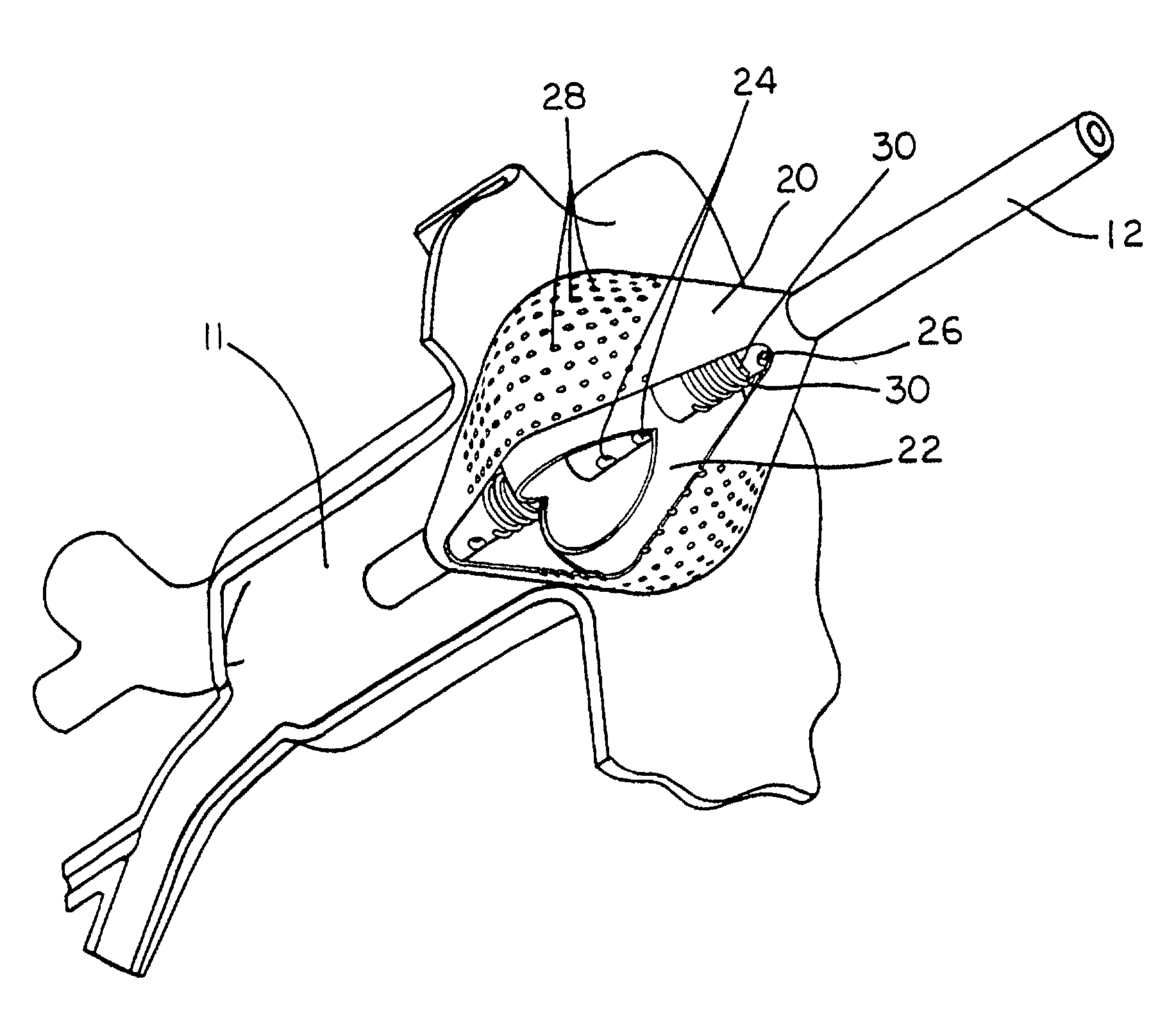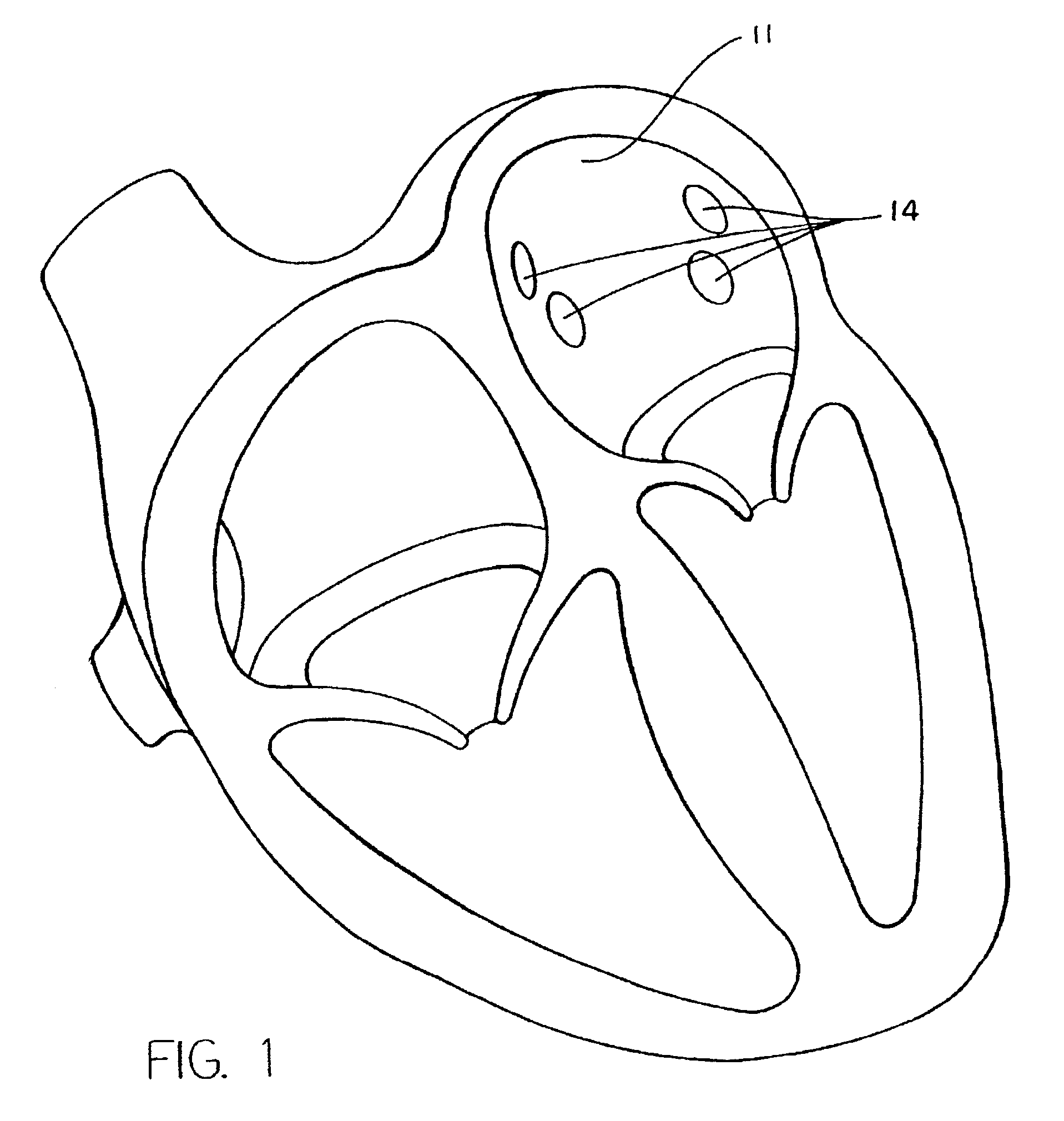Process and device for the treatment of atrial arrhythmia
a technology of atrial arrhythmia and process, applied in the field of atrial arrhythmia treatment process and device, can solve the problems of increased risk factors, increased risk factors, symptomatic or life-threatening atrial arrhythmia,
- Summary
- Abstract
- Description
- Claims
- Application Information
AI Technical Summary
Benefits of technology
Problems solved by technology
Method used
Image
Examples
Embodiment Construction
[0043]A typical human heart includes a right ventricle, a right atrium, a left ventricle and a left atrium. The right atrium is in fluid communication with the superior vena cava and the inferior vena cava. The atrioventricular septum separates the right atrium from the right ventricle. The tricuspid valve contained within the atrioventricular septum provides communication between the right atrium and the right ventricle. on the inner wall of the right atrium where it is connected with the left atrium is a thin walled, recessed portion, the fossa ovalis. A drawing of a human heart with the left atrium (11) and the openings (os) into the respective pulmonary veins (14) is shown in FIG. 1.
[0044]In a normal heart, contraction and relaxation of the heart muscle (myocardium) takes place in an organized fashion as electro-chemical signals pass sequentially through the myocardium from the sinoatrial (SA) node to the atrioventricular (AV) node and then along a well defined route which inclu...
PUM
 Login to View More
Login to View More Abstract
Description
Claims
Application Information
 Login to View More
Login to View More - R&D
- Intellectual Property
- Life Sciences
- Materials
- Tech Scout
- Unparalleled Data Quality
- Higher Quality Content
- 60% Fewer Hallucinations
Browse by: Latest US Patents, China's latest patents, Technical Efficacy Thesaurus, Application Domain, Technology Topic, Popular Technical Reports.
© 2025 PatSnap. All rights reserved.Legal|Privacy policy|Modern Slavery Act Transparency Statement|Sitemap|About US| Contact US: help@patsnap.com



